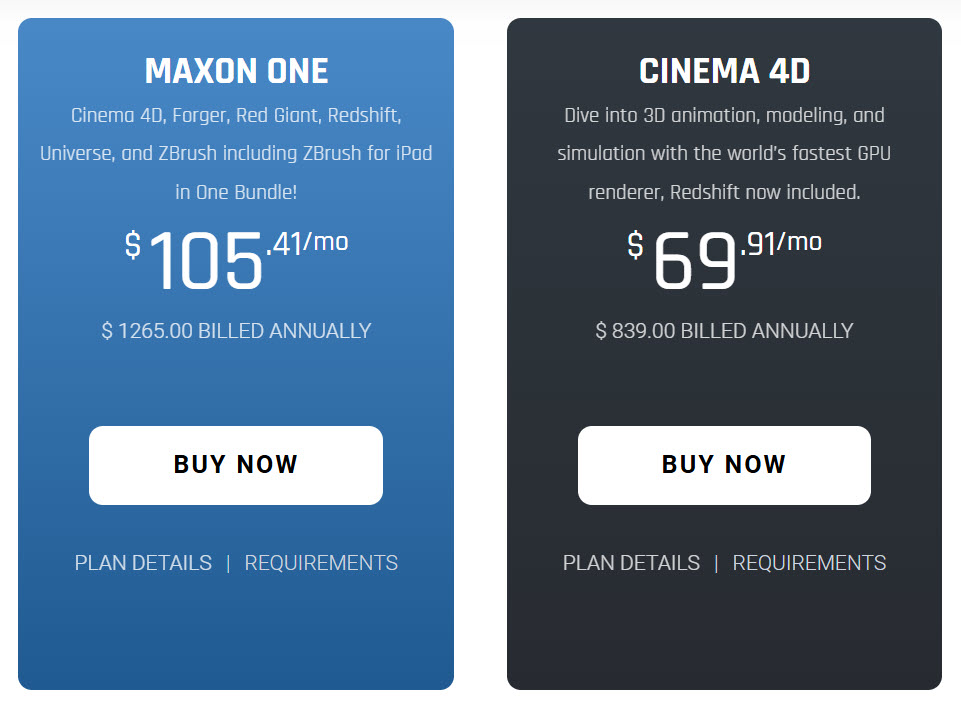Cinema 4D Software: Everything You Need to Know [2025]
If you have been in the 3D world, there is a good chance you have heard of Cinema 4D software. This software has remained one of the top choices for 3D artists around the globe for so many years. Whether you are diving into motion graphics, creating architectural visualizations, or experimenting with AR/VR content, Cinema 4D is the tool that offers you a stable, powerful, and user-friendly experience.

For those who are new to 3D, join VFXRendering in this article and explore everything you need to know about Cinema 4D and the software review in 2025.
Table of Contents
Maxon Cinema 4D Software
What is Cinema 4D?
Cinema 4D is a professional 3D modeling, animation, simulation, and rendering software developed by the Maxon company. The software is known for being fast, flexible, and stable. It is a go-to tool for creating visuals across industries like motion graphics, game development, product design, VFX, AR/VR/MR, and more.
A Brief History
Cinema 4D started its journey as a ray tracing engine created by German developers Christian and Philip Losch. Their project, originally called FastRay, caught the attention of Maxon in 1989 and was released in 1991. However, it was not until 1996 that the first version of Cinema 4D was officially launched.
One of the major milestones in its evolution came in 2006, when Maxon introduced MoGraph, a powerful toolset that solidified Cinema 4D’s position as an industry standard in motion graphics. Since then, the software has continually evolved, and today it is an industry standard for professionals across many creative industries.

Maxon website for Cinema 4D
Who Uses Cinema 4D?
Cinema 4D has a broad user base, from freelancers and small studios to large production houses. It is used to create beautiful 3D images, product and architectural visualizations, 3D animations, motion graphics, VFX, and more.
Here are a few fields where it truly shines:
- Motion Graphics: Cinema 4D is best known for this. Thanks to MoGraph, it is widely used for broadcast design, advertising, and film title sequences.
- Product and Architectural Visualization: When paired with a powerful renderer like Redshift, artists can create stunning photorealistic renders.
- Augmented and Virtual Reality: Cinema 4D comes with tools that support immersive content creation, and its Adobe integration makes it even more powerful.
- VFX and Films: While not its strongest area, Cinema 4D has applications in many VFX workflows, especially for camera matching and scene recreation.
Key Features of Cinema 4D
Key features are what makes Cinema 4D stand out, let’s find out about them.
1. Robust 3D Modeling Tools: C4D provides powerful tools for modeling so you can create detailed models with precision and speed.
2. Streamlined Animation Workflow: The animation workflow in Cinema 4D is intuitive and smooth. It allows artists to animate everything from simple movements to complex character rigs with ease.
3. Comprehensive MoGraph Toolset: MoGraph is definitely a favorite among motion designers. With this toolkit, complex motion graphics and procedural animation have never been easier.
4. Dynamic Simulations: This is what C4D is good at. You can simulate fluids, cloth, particles, rigid bodies, and more for realistic motion.
5. Integrated Redshift Renderer: Redshift is fast, GPU-accelerated rendering power built right in with every subscription. It can satisfy the demanding requirements of creative studios and individuals of all sizes.
Cinema 4D Renderers
Cinema 4D works with many renderers:
- Redshift (included with subscription)
- OctaneRender
- V-Ray
- Arnold
- Cycles, and a few more.
They are all good render engines, and each of them can produce high-quality results.
But Redshift may have more advantages than other render engines. Redshift is deeply integrated with Cinema 4D as it is now bundled with all Cinema 4D subscriptions. You can enjoy both performance and convenience. This Cinema 4D and Redshift combination includes a strong 3D toolset and a fast GPU-accelerated rendering engine.
Cinema 4D Pricing
Cinema 4D prices may vary based on your region. But here is what to expect if you are in the U.S.: one C4D license costs $69.91 per month or $839.00 per year. Cinema 4D subscription includes:
- Cinema 4D software
- Redshift GPU for all hosts
- Five Team Render Nodes for C4D
- Access to Cineversity Training (Maxon online library of tutorials and resources)
Plus, C4D comes in a bundle called ‘Maxon One‘, which includes all tools owned by Maxon. This bundle costs $105.41 per month or $1265.00 per year, which is significantly more expensive than the Cinema 4D cost alone.

If you want to give Cinema 4D a try, take advantage of the free 14-day trial, which is great for testing it out and determining whether it will meet your needs.
Cinema 4D: Frequently Asked Questions
1. Which devices support Cinema 4D?
Currently, Cinema 4D is compatible with most up-to-date versions of Windows, macOS, and Linux.
2. What do artists use Cinema 4D for?
Well, it is a versatile platform for modeling, texturing, lighting, rigging, animating, rendering, and compositing. It is a complete 3D solution for your creativity.
3. What file formats does C4D support?
It handles all standard file types, including 2D images, animation, CAD files, 3D models, After Effects and Final Cut formats, and more.
4. Is Cinema 4D good for beginners?
Absolutely! Cinema 4D has a clean user interface, logical workflows, abundant tools, and excellent learning resources, making it a top pick for beginners who want to grow fast.
Cinema 4D Software Review [2025]
The above is an overview of Cinema 4D. As we continue our in-depth look at Cinema 4D in 2025, let’s focus on what is fresh in the latest release: Cinema 4D 2025.

New Features in Cinema 4D 2025
So, what’s new in Cinema 4D 2025?
All-New Booleans System
One of the standout additions is the all-new Booleans system. You can now combine and subtract shapes with greater precision than ever before, opening up new creative possibilities for modelers. Whether you are creating complex mechanical parts or abstract forms, the system now produces clean geometry, which ensures your final results are both visually polished and technically clean.
Even better, you can combine multiple shapes in a single hierarchy, and animate those cuts easily using Cinema 4D’s MoGraph toolset. This makes procedural modeling more efficient and fun, especially for motion graphics artists who want to animate slicing or assembly effects.
Advanced Particle & Rigid Body Dynamics
Another major improvement comes to the dynamics system. Cinema 4D 2025 offers enhanced control over particles and rigid bodies, with the improved Particle Node Modifier leading the charge. You can now build intricate simulations using Scene Nodes, giving you more flexibility to art-direct particle behavior while seamlessly integrating across modifiers and emitters.
For those working in simulations, collision detection for rigid bodies has been fine-tuned, providing more believable interactions and reducing those frustrating glitches that used to creep into complex setups.
Better USD Support
Cinema 4D 2025 now supports USD (Universal Scene Description) more comprehensively, including skeletal animation, camera, and light properties. This makes it easier to exchange files between Cinema 4D and other DCC tools like Houdini, Maya, and Unreal Engine.
Smarter XRefs
The XRef system has also received a modernization pass. Working with large, complex scenes is now more manageable, with faster performance and better handling of assets. This upgrade is especially beneficial for team collaboration, where multiple artists are handling different components of a scene.
Training Tools for New Users
Finally, C4D 2025 introduced new training tools to help beginners jump into 3D with more confidence. These guided experiences are built into the app and give new users a smooth path into learning modeling, animation, and rendering inside Cinema 4D. If you are just starting out, this is a very welcome addition.
Cinema 4D 2025 Review: Should I Buy It?
Cinema 4D 2025 may not be the largest update we have seen, but it delivers where it counts. With a modernized Booleans system, smarter dynamics, and improved interoperability, Maxon continues to polish and push Cinema 4D forward. Overall, there is a lot to enjoy about this upgrade.
If you are already a C4D subscriber, there is no extra cost. Just open the Maxon One app, hit that update button, and you are ready to explore the new features right away.
For new users, the subscription might feel like an investment. But there is a 14-day full-featured trial available, so you can try everything before making a decision. In most cases, it will, as this is one of the most approachable, professional 3D tools out there. It is also a lot of fun, so we recommend everyone try it.
Final Thoughts
In summary, Cinema 4D strikes the perfect balance between power and accessibility. It offers professional-grade tools, yet keeps a gentle learning curve that invites artists of all levels to explore, experiment, and create.
See more:









No comments